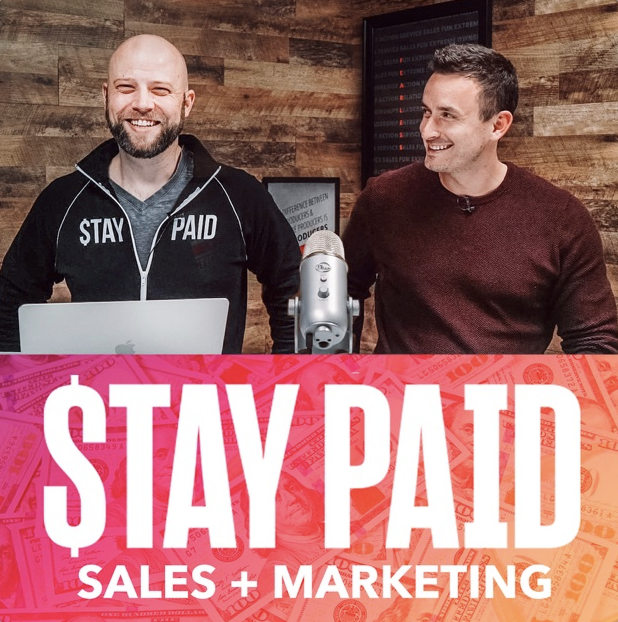Ep. 302: How to Set and Crush Your Cold-Calling Goals
How to Make Cold Calls
Who should listen: Sales professionals who are either reluctant to make cold calls or want to get more success from the calls they make.
Key idea: Cold calling is a numbers game. Have a plan, and then work the plan every day.
Action item: If you haven’t already, start tracking your numbers. Specifically, track how many calls it takes you to get to an appointment, or its equivalent, in your industry.
To determine the best way for you to make cold calls, you should complete the following tasks before you pick up the phone:
- Determine your goals.
- Calculate how many calls you need to make to hit your goals.
- Select the KPIs you should track.
- Discover where to find the numbers you want to call.
- Know and practice what to say.
During this week’s Silver Dollar episode, we discuss each of these tasks and provide you with tips for developing effective cold-calling strategies that can make the process easier and more productive.
Goals and KPIs
Ultimately, the best cold-calling strategies won’t be of much use to you unless you know specifically what you are trying to achieve. Most professional salespeople are making cold calls because they want to make sales. Whether a sale happens by the end of the call or the call is simply the first step of many toward a sale, you must know how many calls you need to close a sale.
Once you know this number, you can reverse engineer your data to discover how many dials it takes to make a contact, how many contacts to make an appointment, how many appointments to win a listing, and how many listings to close a deal.
If you haven’t been tracking your numbers, now is the time to start. Once you have enough data to establish a benchmark, a comparison between how you are doing at any given time and your benchmark is all you need to tell if you are on track or if you need to make adjustments.
Another reason to track your metrics is for those days when your get-up-and-go has gotten-up-and-gone.
On those mornings when you aren’t motivated to face the phone (which happens to everyone now and then), having a plan helps. If you know that you need to make x calls a day, then even if you aren’t at your best, having a plan will help you do what you need to do.
Data sources
Depending on your volume of sales and whether you are selling a high-priced service or product, it may be worth your time to research the decision-makers you want to convert. For this, nothing beats LinkedIn. With LinkedIn, you can search industries, locations, companies, titles, and names, and often find contact information for the people you want to reach.
Alternatively, you can buy lists or search websites of real estate agents, insurance agents, or businesses in other industries.
Sample cold-calling scripts
What would a podcast about cold-calling tips and goals be without at least a few comments about effective cold-calling scripts?
At ReminderMedia, the producers of Stay Paid, we use the following cold-call script that we talk about in detail during the episode. The process follows this pattern:
- Our introduction works to earn our callers the opportunity to have a conversation. It’s only about 10 seconds long, but we leverage information that will capture a prospect’s attention, refer to their pain points, and offer a bold claim about how we can resolve that pain for them.
- From the introduction, we seamlessly move into the discovery phase. We explain what we do and how we do it, and we spend a lot of time on why we do it. Along the way, we ensure that the prospect on the line will benefit from our products and services.
- The button-up phase is where we briefly summarize and ask our prospect what questions they have.
- At this point, our callers are prepared to move to the proposal/pricing phase. The key is to keep the explanation simple.
- It’s at this point that our callers ask for the sale. We encourage them to adopt an “always-be-closing” mindset and to think of each phase as a “mini-close” that works to move them closer and closer to the final sale.
- If our callers have fully demonstrated the value of our products to the prospect, then the prospect should have no objections. But if they are faced with an occasional objection, they’ve been trained on how to overcome them.
One of the more important claims we make in this episode is that cold calling is a “never-lose” strategy. Even if your prospect says no, think about this: you are no worse off than you were before you made the call; it may take 25 dials to reach an interested prospect, but every no gets you one step closer to a yes.
Please enjoy this episode, and we’d appreciate it if you would give us a 5-star rating and leave a review on Apple Podcasts. (Not sure how to leave a review? Click here.)
Connect | Resources
FREE ebook. Guide to Cold Calling: The Techniques Needed to Close More Deals















 Soundcloud
Soundcloud iHeart Radio
iHeart Radio Spotify
Spotify Spotify
Spotify


